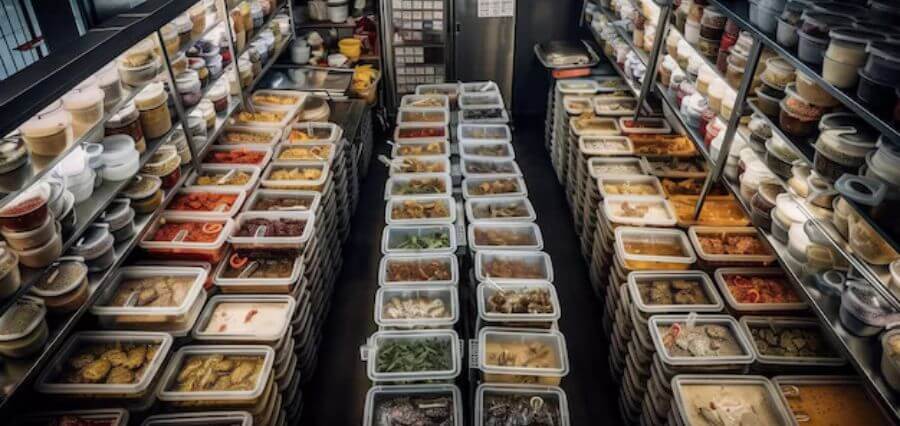
Retailers are facing disruptions from technology improvements and changing consumer purchasing habits, which need them to adjust to new norms. The panel discussed how grocery shops may fulfil consumer expectations, sustain customer happiness, and promote sustainable development by using technology and changes in the market.
Important Topics in the Food Industry
One of the industries that is changing and growing more complex the fastest is the grocery retail sector. Following the COVID-19 pandemic, market patterns have undergone substantial changes due to environmental alterations, economic problems, and inflation. The supermarket supply chain is now more difficult than it has ever been due to these and other enduring problems.
Fresh Rivals in the Industry
Today, one of the main issues facing the food industry is the growing competition from meal kit suppliers and delivery services. Grocery businesses are being forced to review their products as these services represent a greater portion of customer spending. Many supermarkets are increasing the range of prepared foods, premium food-to-go alternatives, and meal packages that can be delivered or picked up to remain competitive. If not managed properly, these programmes run the danger of increasing food waste, which might reduce profitability.
Difficulties in Partner Collaboration
In the retail industry, supplier collaboration is a crucial but underutilised tactic. It has been spoken about for years, but not many shops have been able to execute it well. For the partnership to be effective, both sides must put in a lot of effort and gain from it. Technology may make cooperation easier by reducing the number of labour-intensive data-collecting tasks. Giving order predictions to suppliers is a simple and efficient way to begin working together. These projections may be produced by automated systems, which can then convey them to suppliers, simplifying the procedure and guaranteeing improved supply chain efficiency.
Handling Items with Limited Shelf Lives and Novel
Organising fresh and perishable goods is a persistent problem for the grocery business. Known for emphasising simplicity and efficiency, retailers such as Aldi and Lidl are branching out into new markets by adding more fresh and organic items to their product offers. Businesses’ supply chains are being put to the test as they navigate the challenges posed by smaller store layouts and localised assortments as a result of this shift. Furthermore, grocery shops are providing more ready-to-eat meals, in-store cooking services, and food-to-go alternatives in response to the increased need for convenience. These days, on-site food preparation is crucial to profitability, but it also presents new operational difficulties.
Integration of Technology and Sustainability
Consumer demand is making sustainability more than simply a trendy idea. Customers are pressuring grocery stores to implement more environmentally friendly procedures, and several well-known businesses have pledged to lessen their carbon footprints. Profitability may coexist with reduced waste and increased production. By reducing waste, providing discounts of up to 40%, and effectively replenishing their stores, grocery companies may enhance their earnings. Long-term success depends on operational sustainability since retailers’ brands might suffer if they don’t make significant progress in this area.
The Increasing Significance of Omnichannel Approaches
The merging of online and offline sales channels, or omnichannel retailing, is quickly becoming an essential component of contemporary supermarket operations. It is now an essential component of the company and not just an extra optional service. As food shopping becomes more popular online, businesses need to make sure that their business runs smoothly and that their products are of the greatest quality.
Whether they are delivered to their homes or picked up at the kerb, customers expect their groceries to arrive fresh. However, due to the high cost of processing and shipping food, particularly perishable and temperature-sensitive goods, many retailers find it difficult to make a profit in the online market.
Utilising AI and Machine Learning
These days, grocery stores have access to a lot of data from both online and physical transactions. Retailers may use machine learning and artificial intelligence (AI) to interpret this data and make decisions more rapidly and precisely. It would be difficult for a human planner to estimate demand by taking into account hundreds of variables, but machine learning algorithms can. Although artificial intelligence (AI) is sometimes portrayed as a single “intelligent” entity, merchants use a variety of tools and algorithms to supplement more conventional approaches like statistical analysis. Grocers may benefit from this technology in a variety of ways, including targeted advertising campaigns and more effective inventory management.
Future Prospects for Grocery Retail
The future development of the grocery business is probably going to be influenced by a few major topics.
First and foremost, there will never be a time when this is not a top priority. Food production resources are too precious to be thrown away after being used for producing, selling, and transporting. Food waste reduction will be the retailer’s responsibility, and it will increase sales.
Second, the supermarket supply chain’s effectiveness will be much more crucial. Cost-conscious consumers won’t put up with increased costs as a result of subpar supply chains. To stay competitive, retailers will need to simplify their operations.
Ultimately, there will be a significant disruption in the grocery industry due to the growing influence of automation and technology. Retail is ideally positioned to transition away from manual labour in line with other industries. Grocers will be able to decrease costs, increase efficiency, and meet changing customer expectations with the use of AI and automation.
In conclusion, the major shifts in the supermarket sector may be attributed to rivalry, changing customer expectations, and technological improvements. To maintain long-term success, retailers need to adjust to these changes by prioritising sustainability, enhancing efficiency, and embracing innovation.


